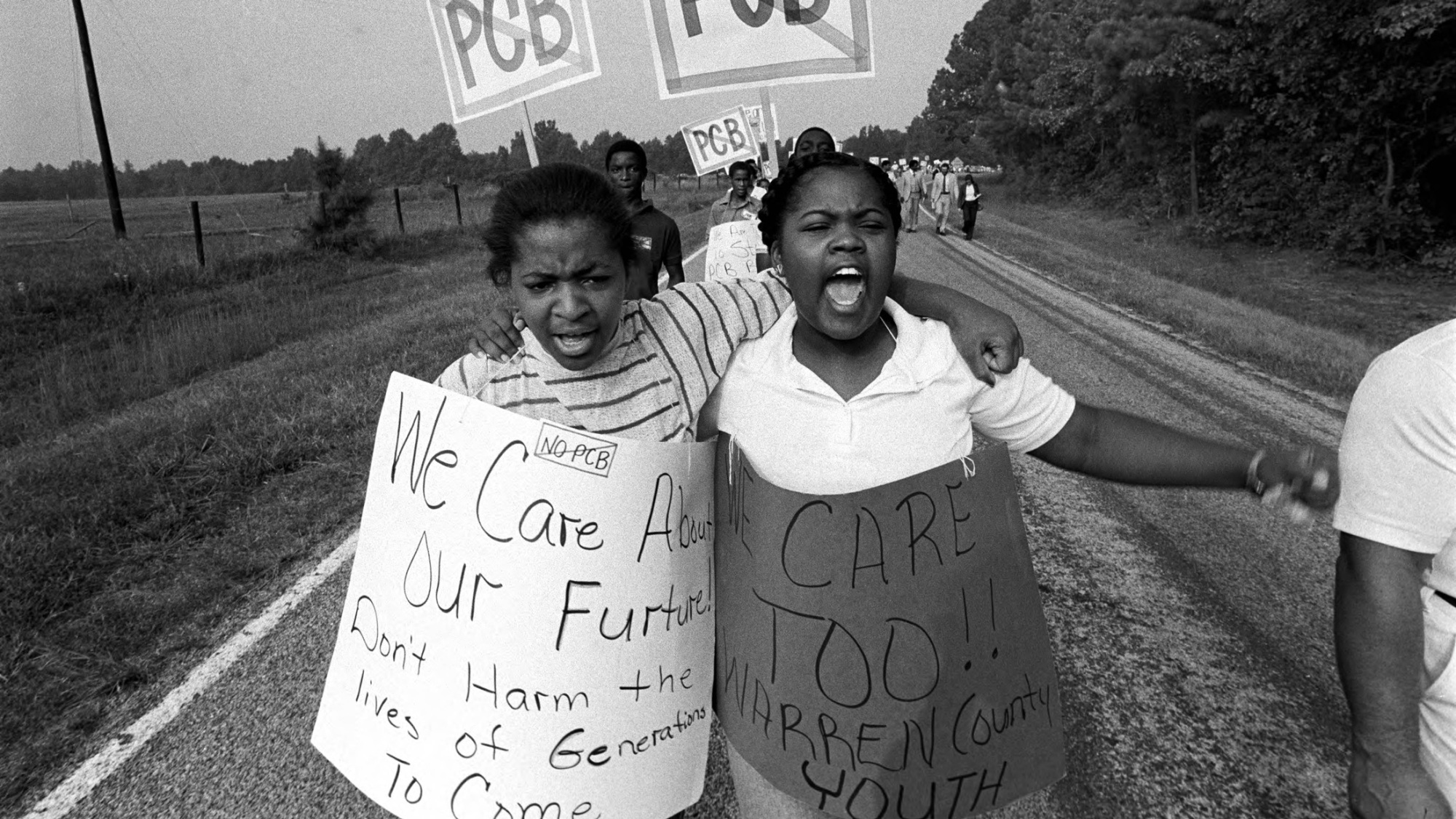
Environmental Justice Facts:
- As a result of the cumulative effects of the political and economic disempowerment and racism, the vast majority of African Americans live in neighborhoods with much higher average exposure to air pollutants of every type. Research indicates that this phenomenon is caused by the discriminatory siting of environmental hazards in existing African American neighborhoods, not (as is sometimes suggested) by a pollution-induced decline in property values and subsequent influx of low-income African Americans
- African Americans are 13% of the U.S. population and on average emit nearly 20% less green house gases than non-Hispanic white per capita
- African Americans are responsible for only 9% of CO2 emissions, in contrast to 76% for non-Hispanic Whites
- 71% of African Americans live in counties in violation of air pollution standards
- Approximately 68% of African Americans live within 30 miles of coal fired power plants
- An African American family making $50,000 per year is more likely to live near a toxic facility than a White American family making $15,000 per year
- African Americans spent $40 billion on energy in 2009, yet African Americans only comprised 1.1% of those employed in the energy sector and earn less than 1% of the revenue derived from the energy market
- A report on power plan pollution found that emissions from all power plants in the U.S. (both coal and other fuel sources) are responsible for 20,000 premature deaths, 7,000 asthma-related emergency room visits, and 18,000 cases of chronic bronchitis each year
- Asthma affects African American at a 36% higher rate of incidence than White American. African Americans are hospitalized for asthma at three times the rate of White American and die of asthma at twice the rate of White Americans
Pesticides Use and its Health Effects on Children
Pesticide drift - the drifting of pesticides away from their site of application, exposes children in rural or suburban areas to dangerous toxins. Children are in a higher risk group due higher metabolic rates and differences in their ability to activate, detoxify, and excrete xenobiotics (a foreign chemical substance found within an organism that is not normally naturally produced by or expected to be present within that organism). Children generally are at risk for higher exposure than adults due to their play behaviors and diet.The EPA "has not met its obligations and has left rural children vulnerable from pesticide drift". In 2000 and 2001, the EPA started to phase-out home use of certain pesticides that were known to be neurotoxic to children. Despite this phase-out rural populations are still vulnerable to the neurotoxic chemicals that drift from agricultural sites. This failure to protect rural children has disproportionate impacts on children on low-income and communities of color.
The EPA must take more aggressive action to eliminate the double-standard it has created. That is why the petition we have filed on behalf of PSR and others asks EPA to immediately review the most toxic pesticides and protect kids from harmful drift. EPA must complete this work much more quickly than its current schedule of over 10 years. Rural kids must not be subjected to 10 more years of pesticide drift. EPA must also impose spray buffers—proven and recognized by EPA to be effective—between applications of pesticides and children’s homes, schools, and play areas. EPA’s legal and moral obligations to do so are clear. We must protect the most vulnerable of our population from exposures to drifting pesticide poisons.
--(Janette Brimmer and Patti Goldman, "Pesticides in the Air: Kids at Risk")